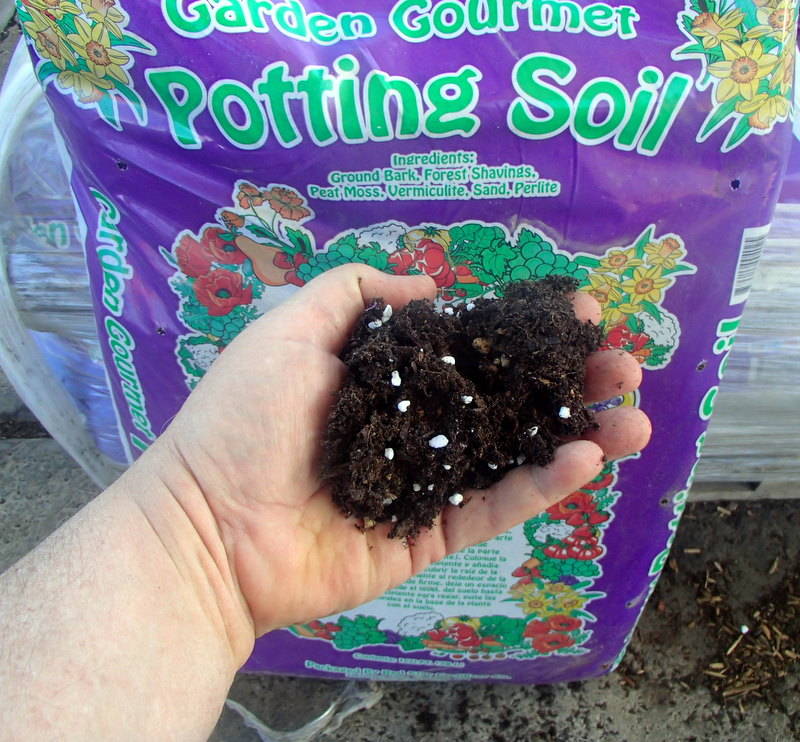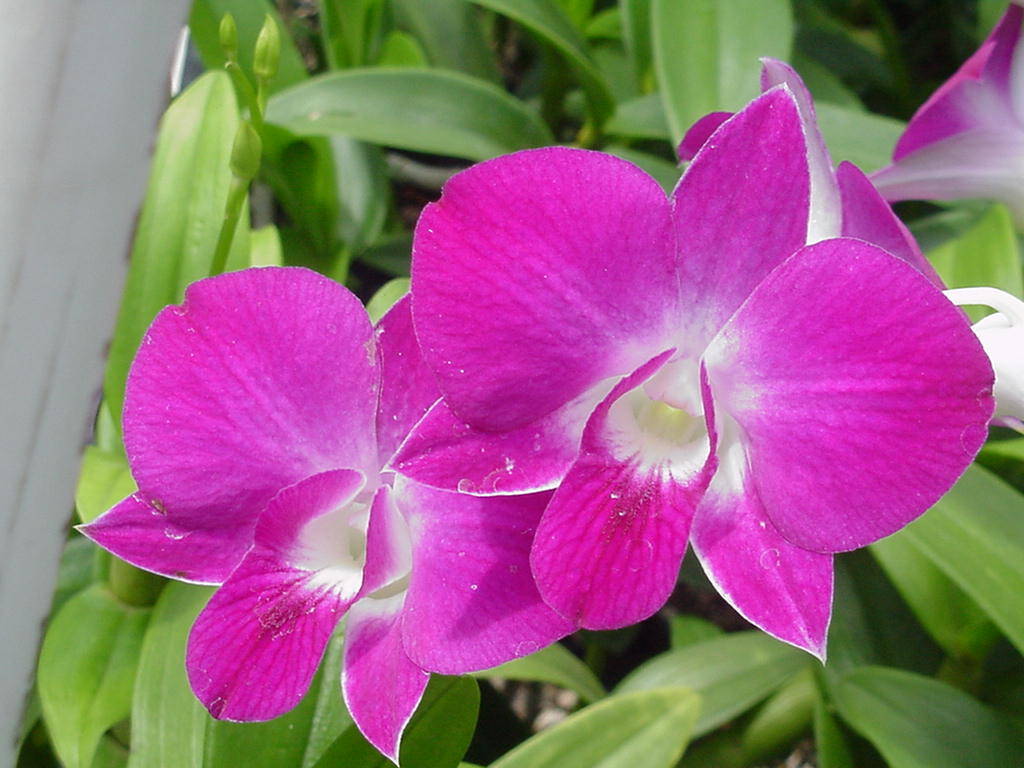Higher priced potting soils are worth added expense


Q: Please settle a disagreement between my wife and me. Each spring my wife plants several plants in pots for our patio using bagged potting soil. Each year a few of them die and others live. This happened two years in a row. I contend the potting soils need to have some real dirt mixed in with it to make them better.
A: I hate to get in the middle of arguments between a husband and a wife. I think I can say diplomatically you are both right. Bags of potting or container soils are pretty much all the same when comparing those in the same price range.
You get what you pay for. Higher priced potting soils, like those from Fox Farm, use a higher percentage of more expensive ingredients. These potting soils cost more but they are superior compared to less expensive brands.
If you use inexpensive potting soil then add a high-quality compost to it. Add about 15 to 25 percent by volume. Adding your own compost helps inexpensive potting soils perform a lot better.
Q: The branches of my palo verde are turning brown and dying. I have lost one tree and looks like two others will die as well. They are 25 years old.
A: It is difficult to diagnose without more information. If branches are dying in palo verde during the heat, my mind instantly goes towards borers. The palo verde borer that feeds on the roots is a possibility.
It is possible it could be other borers in the tree, such as some of the flat-headed borers, but individual branches dying is frequently associated with borers of some sort. If you think borers might be the problem, apply a soil drench insecticide around the base of the tree and water it in.
It is also possible to be water related such as keeping the soil around roots too wet. If the irrigation has been changed recently or there was an irrigation problem, too much water might be the culprit. Desert trees like palo verde perform very well when there is more time between irrigations compared to landscape trees like ash or even chitalpa.
It could be pruning related. If trees were recently pruned hard this past winter or spring, there is a possibility of sunburn damage to the limbs. The limbs would be discolored or brown on the top surface facing the sunlight. Sunburn damage frequently attracts boring insects.
Make sure the tree is watered deeply but infrequently. Water applied to the soil should wet most of the area under the tree, not just close to the trunk. This water should drain into the soil 18 inches or more.
Wet soil is soft. Dry soil is hard. Use a long screwdriver or ⅜-inch rebar poked in the soil to determine how deep the water has moved into the soil after the irrigation.
This tree should not require irrigation for a week if it’s watered deeply. When the soil around the roots becomes dry, this tree will start dropping its leaves. This is your signal it’s time to water again.
Q: What lavender would be best for making a hedge? I just bought a home and heard lavender is a natural repellent for scorpions and other insects. I’m trying to tackle my pest problems and landscaping renovation at the same time.
A: I think your selection will be restricted more by what is available locally. Stay away from English lavender in hot locations. English lavender would be better planted in the north or east sides in some light shade. Spanish and French lavender are generally more tolerant of the heat.
I am not sure what local nurseries are selling, but lavender has been planted in our climate without any difficulties. It is fine in full sun but it may struggle in very hot locations such as against walls west- or south-facing. These plants will appreciate amending the soil at planting time.
Rock mulch is not a good idea with lavender. Amend the soil with compost at planting time and cover the surface of the soil with woodchip mulch. You might look for rosemary and neem oils as a deterrent as well.
Q: I have a small collection of Cymbidiums, Cattleyas, Phalaenopsis orchids and staghorn fern plants. I am moving from California to Henderson. Will I have any luck in continuing to grow them after I move? What kind of different care will I need?
A: I have grown easy-to-grow orchids such as Phalaenopsis and Cymbidium without any problems in the open air here in the Mojave Desert. I have even kept them in an open atrium without extra humidity during the winter without problems. I just keep an eye on the temperature and the sunlight. It is surprising the temperature and humidity extremes they can handle.
Staghorn fern is going to be different. Unlike orchids, they don’t require a lot of light. But they will begin to look ragged if you don’t provide them with extra humidity.
Staghorn, as well as birds nest ferns, will be difficult to keep looking good without some control over humidity. You might consider a humidifier in the room where you keep plants more sensitive to humidity.
Use distilled water spiked with a small amount of fertilizer when you water. Check the salinity of your irrigation water and keep the salinity below an EC of 2.0 mmhos/cm (dS/m) when you water any houseplants.
Our tap water coming from the Colorado River has high salt levels that could damage sensitive plants if they are watered with it regularly. Never mist them with it. Likewise, it’s not good to water plants with straight distilled or RO water.
There is a local group of orchid growers called the Greater Las Vegas Area Orchid Society that you could contact. They can be found on the internet at www.glvos.org.
Q: What is the proper care for canna lilies. Since they are a dominant plant in my landscaping, I’d like to know what to fertilize them with, when to fertilize, when to cut back, when to water, how much and in which season, etc. I read your information on deadheading and that was useful.
A: I like canna lily as well. There are many types to pick from: different heights, flower color, leaf color, leaf variegation. One thing is for sure, these plants love lots of organics in the soil and plenty of water. They even grow in fish ponds.
Plant them in high water-use areas of the landscape together with other plants that like lots of water. They can take full sun as long as they get plenty of water and great soil. Make sure their soil is amended with lots of compost at planting time. They love the surface of the soil surrounding them covered with woodchip mulch, not rock mulch.
If they are growing well and robustly, they need to be dug up and divided every three to four years. Do this at the same time as you would iris — when it cools off in the fall or very early spring. Fall is best.
Deadheading is always important for looks and continual blooming. Fertilize them three or four times during the year with a rose-type fertilizer: very early spring when new growth is pushing, lightly during the summer months at about half rate, late summer when it begins to cool and once more around Halloween.
To help you remember it, just think of Labor Day, Fourth of July (half rate), Memorial Day and Halloween. To get vibrant cannas, substitute compost instead of fertilizer for the first or last application of the year.
Cut them back to the ground after they freeze in December or just before new growth if they don’t freeze.
Bob Morris is a horticulture expert and professor emeritus at the University of Nevada, Las Vegas. Visit his blog at xtremehorticulture.blogspot.com. Send questions to Extremehort@aol.com.













